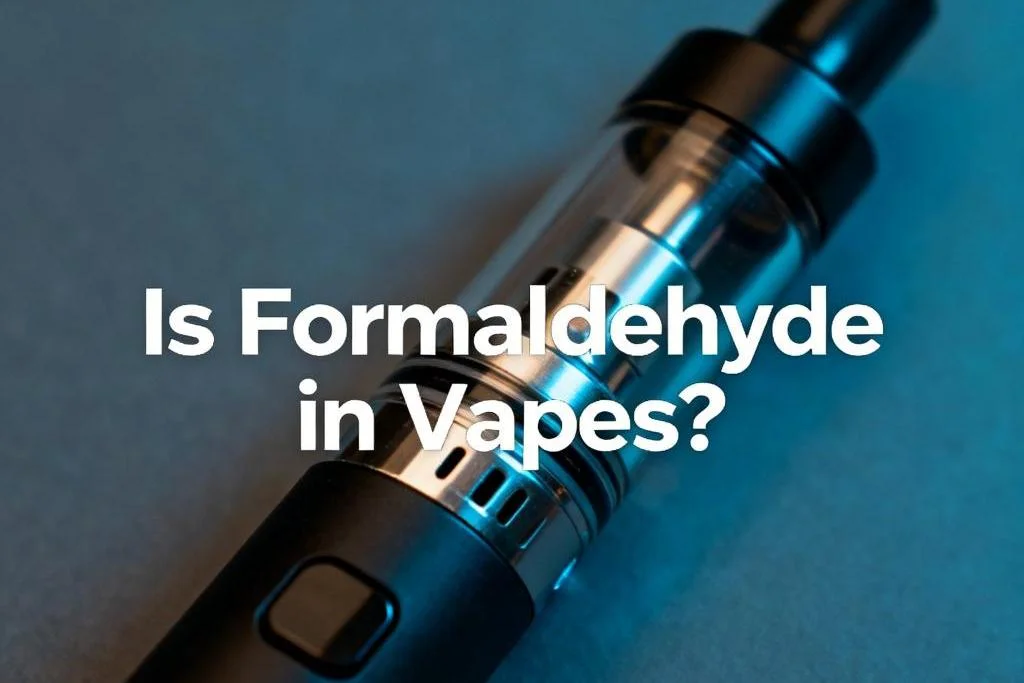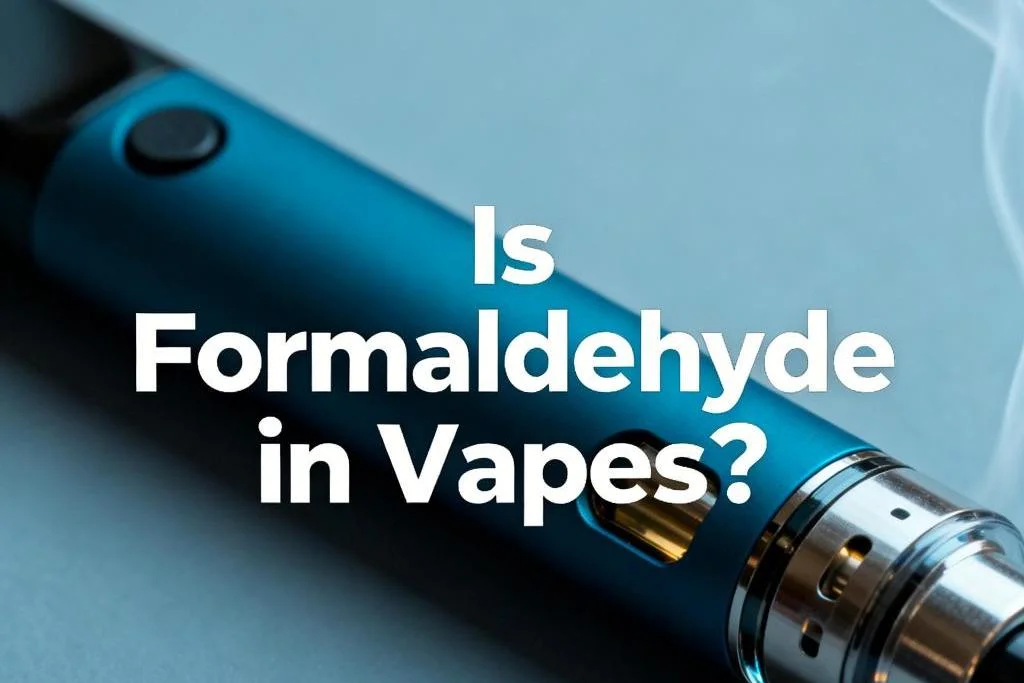Why Is My Vape Leaking? Common Causes and How to Fix It
Most vapers look for root causes like faulty seals, coil issues, thin e-liquid, or improper filling techniques.
Read More >>WARNING: THIS PRODUCT CONTAINS NICOTINE. NICOTINE IS AN ADDICTIVE CHEMICAL.
Whether you’re new to vaping or already familiar with e-liquids, one concern appears often in Google searches: “Is formaldehyde in vapes?” The topic keeps resurfacing because it’s tied to safety, heating temperature, and how modern vape devices work. Here’s a clear breakdown of what current evidence shows, why the concern exists, and what vapers should realistically know today.
Formaldehyde is a chemical naturally created through combustion and high-temperature reactions. It exists in cigarette smoke at extremely high levels, which is why comparing vapes to traditional cigarettes often brings this question up.
Early laboratory studies created headlines suggesting vapes might also produce formaldehyde. However, many of those tests heated coils far beyond normal use, producing “dry hits” that users would never tolerate in real life due to the harsh, burnt taste.
This is where most confusion began.

Modern regulated devices are designed to heat e-liquid within safe temperature ranges. When the coil is properly saturated and wattage is appropriate for the coil material, formaldehyde formation is extremely low—nowhere near cigarette smoke levels.
When a coil is overheated or run dry, the PG (propylene glycol) in e-liquid can thermally decompose, producing:
But this only occurs in scenarios that would taste burnt and unpleasant, prompting users to stop inhaling immediately.
Modern disposables and pod systems often include:
These technologies significantly reduce the likelihood of overheating, compared with early-generation vape devices.
Disposable vapes have become one of the most popular categories in the market, so many users specifically search for formaldehyde in disposables.
Most high-quality disposable brands operate with fixed power limits and optimized mesh coils. Because the power output cannot be adjusted, the risk of extreme overheating is minimal.
However:
…can operate inconsistently and may heat above safe ranges. As always, brand reliability is a key factor in user safety.
Scientific comparisons consistently show that:
Only in “dry puff” laboratory conditions do vapes approach cigarette-like levels—and real users avoid those conditions instinctively.

Even though the risks are low under normal use, good vape habits further reduce exposure:
Avoid chain-vaping quicker than the wick can reabsorb e-liquid.
Old or burnt coils increase decomposition of e-liquid.
Follow the coil’s recommended wattage range.
Quality control, consistent materials, and modern chipsets improve safety.
A dry hit is your biggest indicator of overheating—stop immediately.
The evidence shows that formaldehyde in vapes isn’t a concern under typical usage. The chemical appears only in high quantities when a coil is overheated, dry, or misused—conditions that produce strong off-flavors most users naturally avoid.
While no inhalation product is entirely risk-free, vaping remains significantly lower in harmful carbonyl compounds when compared with traditional cigarette smoking.
Vapes can produce formaldehyde, but only in specific situations—not during normal use. Most modern vape devices and disposables are designed to heat e-liquid within safe temperature limits, so formaldehyde levels remain extremely low and far below those found in cigarette smoke. High levels appear only when a coil overheats, runs dry, or burns the e-liquid, which creates a harsh burnt taste users naturally avoid. With proper wattage, fresh coils, and reputable devices, the risk of formaldehyde exposure is minimal, making everyday vaping significantly less harmful in this regard compared with smoking.
1. Do vapes contain formaldehyde?
Vapes can produce small amounts of formaldehyde, but only when the coil overheats or runs dry. Under normal vaping conditions, regulated devices heat e-liquid within safe temperature ranges, keeping formaldehyde levels extremely low.
2. Are formaldehyde levels in vapes as high as cigarettes?
No. Cigarettes generate large amounts of formaldehyde due to combustion. Vapes operate without burning tobacco, so their formaldehyde output is significantly lower unless the device is misused or producing burnt hits.
3. Why does overheating a vape create formaldehyde?
When a coil gets too hot, the propylene glycol in the e-liquid can break down chemically and form aldehydes like formaldehyde. This usually happens during dry hits, which taste harsh and unpleasant, prompting users to stop immediately.
4. Do disposable vapes produce more formaldehyde than refillable devices?
Most reputable disposable vapes are designed with fixed power outputs and mesh coils that prevent overheating, keeping aldehyde formation low. However, low-quality or counterfeit disposables may heat inconsistently and increase the risk.
5. How can I reduce formaldehyde exposure when vaping?
Use your device within the recommended wattage range, keep the coil properly saturated, avoid vaping when it tastes burnt, and replace coils regularly. Quality devices with temperature control or anti-dry-burn features offer an added layer of safety.